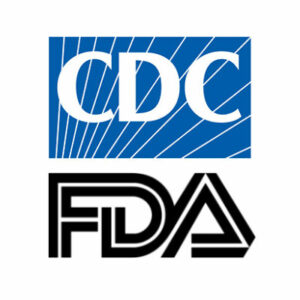 Last month, the Food and Drug Administration (FDA) and Centers for Disease Control and Prevention (CDC) reacted to the unintended harm to people living with chronic pain as a result of policy measures intended to ameliorate the opioid crisis.
Last month, the Food and Drug Administration (FDA) and Centers for Disease Control and Prevention (CDC) reacted to the unintended harm to people living with chronic pain as a result of policy measures intended to ameliorate the opioid crisis.
On April 9, the FDA issued a Safety Announcement citing “serious harm,” including “withdrawal symptoms, uncontrolled pain, psychological distress and suicide” as a result of sudden discontinuation or rapid dose decreases in opioid pain medication. The FDA will now require changes to the prescribing information for health care professionals that will provide guidance on how to safely reduce or taper patients off opioid medications. The agency states that there is no standard opioid tapering schedule; rather, a schedule must be tailored to each patient’s unique situation considering a variety of factors, including the type of pain the patient has.
The FDA is also warning patients not to suddenly stop taking their opioid medication, as this can result in serious problems. Even when patients gradually reduce these medications, they may still experience withdrawal symptoms such as chills and muscle aches. If these are excessive, patients are encouraged to contact their health care provider.
Feeling the pressure from the FDA action, a letter from more than 300 health care practitioners, and increasing news coverage of harms to people with pain, three CDC Guideline authors, writing in the New England Journal of Medicine, said the Guidelines have been misapplied and applied inflexibly in some instances. However, they also vigorously defended the Guideline, stating that the “medical and health policy communities have largely embraced its recommendations” it has sparked “accelerated decreases in prescribing” and it was rated “high quality by the ECRI Guidelines Trust Scorecard.”
“In contrast to the FDA’s direct warning about widespread and serious harms to chronic pain patients that have already occurred, the CDC authors seem to avoid direct discussion of what has sadly already transpired,” says U.S. Pain National Director of Policy and Advocacy Cindy Steinberg. “ The authors say ‘patients may find tapering challenging’, ‘could face risks related to withdrawal’, and ‘if dosages are abruptly tapered, may seek other sources of opioids or have adverse psychological and physical outcomes’. They go on to say that ‘some clinicians may find it easier to refer or dismiss patients from care’ and ‘Clinicians might universally stop prescribing opioids, even in situations in which the benefits outweigh the risks.’” [Emphasis added in italics]
“Opioid pain medication does not help everyone with chronic pain and for those who are helped, opioids do not completely take the pain away,” Steinberg continues. “However, the fact remains that for millions of pain sufferers, particularly those with severe pain, who take them responsibly and legitimately, they are a lifeline that allows them to have some quality of life and lessens their relentless pain. In the three years since the Guideline was released, thousands of stories have surfaced about forced tapering and patient abandonment. Yet, CDC has largely ignored the suffering of Americans living with pain.”
Authors of the New England Journal of Medicine article did not announce any changes to the Guideline in response to these harms, but said the CDC is evaluating the intended and unintended impact of the Guideline and is committed to updating recommendations when new evidence is available.
While this is a step in the right direction, Steinberg says, the CDC should have enough evidence of harm to revise the Guideline, particularly Guideline 5.
To learn more about U.S. Pain Foundation’s position on opioid prescribing, click here.
